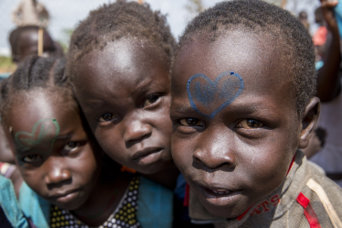- About
- Topics
- Story
- In-Depth
- Picks
- Opinion
- News
- Donate
- Signup for our newsletterOur Editors' Best Picks.Send
Read, Debate: Engage.
| located: | Yemen, Central African Republic, Nigeria, Somalia, South Sudan |
|---|---|
| editor: | Maria João Morais |
This week the United Nations celebrated the Universal Children's Day, raising awareness of children’s rights to life, to health, to education and to play. Despite the progress that has been made in some areas during the past few years, the enormous challenge of ensuring that all children are truly protected still lies ahead of us. The eradication of hunger must be a fundamental priority.
According to the UN, the global rate of malnutrition has risen this year for the first time since 2003 to 850 million people. Many are children, for whom chronic malnutrition leads to lifelong and irreversible mental and physical harm.
The outbreak of war continues to perpetuate rates of famine, with 6 out of 10 hungry people living in countries in conflict. Despite such dramatic consequences, many conflicts remain forgotten and unreported by the world’s media.
In Yemen, the humanitarian disaster level is the greatest in the world. Cholera is more widespread there than anywhere else and more than 2 million children are at risk of dying from malnutrition, according to the UN. But similar crises extend to countries such as the Central African Republic, where it is difficult to find anyone unaffected by its humanitarian crisis. South Sudan, Nigeria and Somalia are other countries affected by unrelenting famine, but rarely under the media spotlight. In all these cases, children are the most fragile and helpless victims.
The lack of attention paid to these situations by the media, hinders resolving the conflicts and directing humanitarian aid. It allows famine and widespread hunger in the poorest nations to continue with little or no action from the richer Western world. Unfortunately, eradicating malnutrition is still to become a global ambition.
